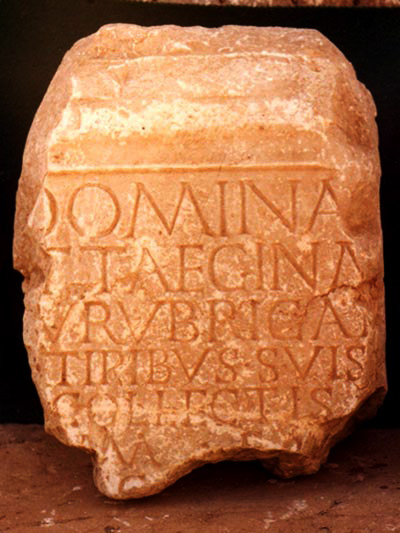Inscription to Lady Ataegina
Also visible are the words "her tribe" and the -Briga element common in Celtic place-names. Some 36 inscriptions honor Ataecina or Adaegina, many of them at the sanctuary of El Trampal in Alcuéscar, Caceres.
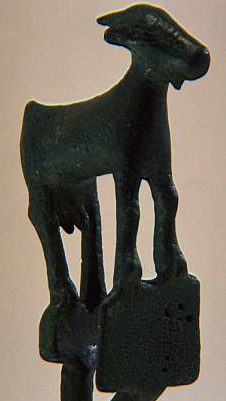
A bronze goat with extensions for attaching to a stone or pillar. Such images were commonly offered to the goddess Ataecina. Some Celtic goddesses in southern Gaul were also associated with goats, including one that Romans called Juno Caprotina. Some later inscriptions connect Ataecina with the Latin goddess Prosperina, because of her underworld powers.
The Goddess Navia or Nabia
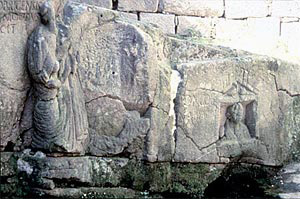
Fonte do Idolo in Bragança, Portugal,
honoring the river goddess Nabia. She was widely revered by the Callaicians and Lusitanians in northwestern Iberia. Many rivers are named for her, including the Navia in Galicia and the Navia in Asturias (Spain), and the Neiva in northern Portugal.
The "fountain of the idol" was a sanctuary built around a spring. An inscription in Celtic language is visible at the upper left.
See a larger image of the sanctuary
Another water goddess was Reva, also known as Baraecus, who presided over the confluence of the Anas (Guadiana) and Baraecus (Albárrega) rivers.
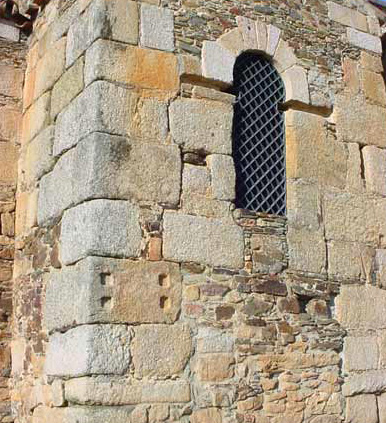
Christianization of pagan temples
At left, a stone showing the characteristic four peg-holes used to mount bronze goats of the goddess Ataecina was re-used as a cornerstone for a church. The goddess, whose sanctuary stood on this site, was replaced by Santa Lucía del Trampal, and the builders incorporated stones from her shrine into the church.

Another christianized sanctuary belonged to a Reina de los Aves (Queen of the Birds) which were depicted on wall paintings in the church of Santa Eulalia de Boveda. There was a sacred bath inside the building, and this image of praying women appears on its walls.
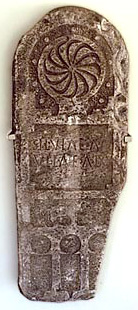
A funerary stela from Braganca region.
The whirling wheel appears often in ancient Portuguese art, especially the triskele. These stelae resemble later funerary stones from Gotland Island in the Baltic sea; they prominently feature the whorl as a sign of rebirth and regeneration.

Another example from Spain, provenance unknown. Era of Roman rule.

Triskele relief from
northern Portugal.
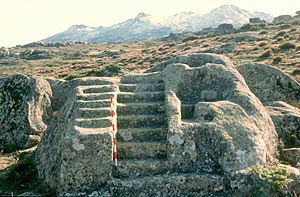
The rock-cut steps and altar platform
at Ulaca, Avila, Spain. Many shrines of
carved granite
are found in northwest Iberia.

A floor mosaic from Portugal
during the Roman colonization
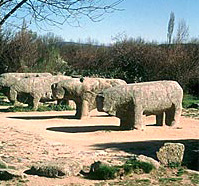
Los Toros de Guisando, nearly 3 meters long.
